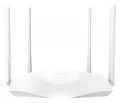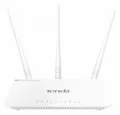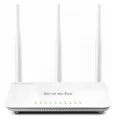Tenda AC23 router review
Tenda introduced the AC23 router in 2020. It is powered by Realtek RTL8197FH @ 1 GHz chipset, 64 MB of RAM, and 8 MB of flash memory.
Want to know if the AC23 is a game-changer? Find out soon!
Table of Contents
- Tenda AC23 specifications
- Body, dimensions, weight
- System, chipset, RAM, flash, power supply
- Network, protocols, WAN and LAN ports
- Wireless, antennas, speed, security
- Connectivity
- Administration, user interface, login information
- Links
- Verdict, Pros and Cons
- Photos
- Comparisons
Our personal experiences and opinions form the basis of this article. We aimed to share insights on a topic, and we hoped others would find it useful and inspirational. If you noticed any mistakes or missing details about the Tenda AC23, please let us know.
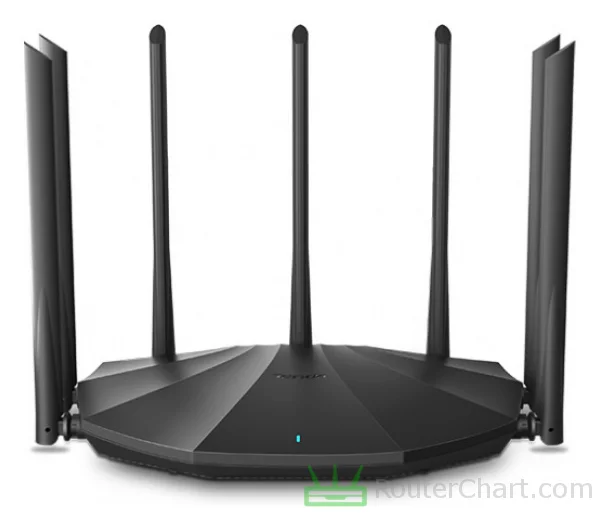
The AC23 is a good choice for users. It is reliable and feature-rich, and it supports the latest Wi-Fi 6 technology. Tenda has received awards and recognition for its excellent networking products.
Tenda AC23 specifications
| Brand | Tenda |
|---|---|
| Name | AC23 |
| Type | AC23 |
| Rating | |
| Launch | 2020 |
Body
| Dimensions | 238.9 x 144.3 x 40.3 mm |
|---|---|
| Weight | 640 g |
If you live in a small apartment, the size of the router is crucial to deciding whether it will fit. The weight of a router can matter in some situations. But it's usually not as crucial as other factors.
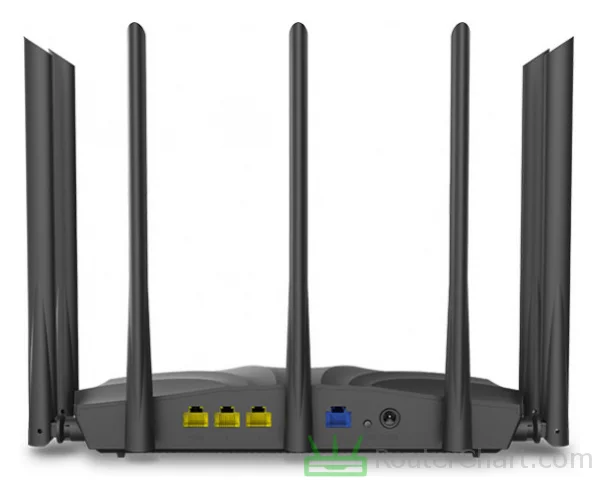
System
| Chipset | Realtek RTL8197FH @ 1 GHz |
|---|---|
| RAM | 64 MB |
| Flash | 8 MB |
| OS | Tenda |
| Power supply | 12 V / 1.5 A |
The Realtek RTL8197FH @ 1 GHz CPU affects the router's performance, working with RAM and firmware. The amount of RAM in a router affects its performance and ability to handle tasks and traffic.

Network
| Protocols | IPv4 IPv6 |
|---|---|
| LAN ports | 4 x 10/100/1000 Mbps |
| WAN ports | 1 x 10/100/1000 Mbps |
| Mobile network | no |
| VPN support | PPTP L2TP |
The AC23 router is compatible with IPv6. IPv6 offers many enhancements and improvements over IPv4. This router has Gigabit Ethernet LAN ports. They provide data transfer speeds of up to 1000 Mbps. The AC23 ensures that you can use fast internet from your ISP fully.
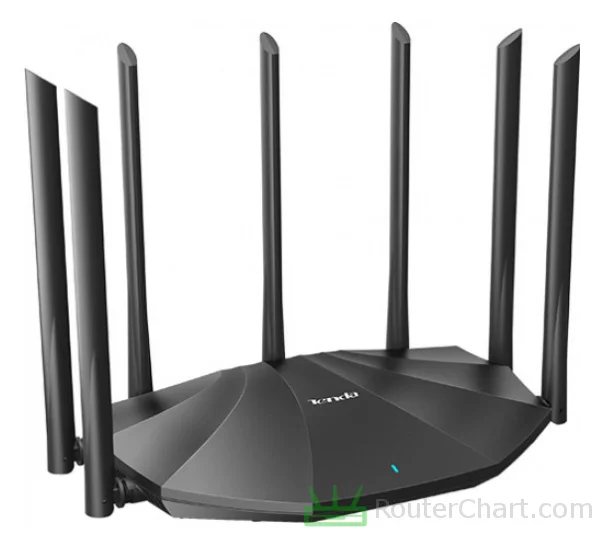
Wireless
| Antennas | 7 x 6 dBi fixed |
|---|---|
| 2.4 GHz | yes |
| 5 GHz | yes |
| 6 GHz | no |
| 60 GHz | no |
| Standards | IEEE 802.11a/b/g/n/ac |
| Class | AC2100 |
| Speed | 300 + 1733 Mbps |
| Transmit power | 23 dBm |
| Security | WPA WPA2 WPS |
| Guest network | yes |
Many IoT devices, smart home devices, and older Wi-Fi devices mainly use the 2.4 GHz band. This router operates on both the 2.4 GHz and 5 GHz frequency bands. Wi-Fi 5 uses the 5 GHz band. It uses wider channels and advanced techniques to send data faster. The introduction of WPA2 (Wi-Fi Protected Access 2) improved upon WEP. It provides stronger security. The Wi-Fi Protected Setup (WPS) lets you join a safe wireless network with the push of a button or a simple PIN entry.
Connectivity
| USB ports | no |
|---|---|
| Print server | no |
| File server | no |
The AC23 router doesn't have file-server or print-server functionality.
Administration
| Default IP | 192.168.0.1 |
|---|---|
| Default username | [blank] |
| Default password | [blank] |
If you can't log in to your Tenda router's setup panel, try resetting it. A reset can help you troubleshoot. It is highly recommended to change the default password of your AC23 router. Do this after the initial setup.
Links
| Official site | https://www.tendacn.com/ |
|---|
Pros and Cons
Every router, including this Tenda one, has its good sides and not-so-good sides. Let's take a closer look at both to get a full understanding of what this router can do. Just remember, this is just what I think, and you might see things differently.
Pros
- sufficient memory
- IPv6 capable
- high-speed LAN port
- high-speed WAN port
- works on 5 GHz band
- decent Wi-Fi performance
- WPS friendly
Cons
- insufficient flash
- missing Wi-Fi 6 support
- incompatible with WPA3
- no USB connectivity
Tenda AC23 photos
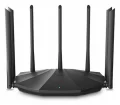
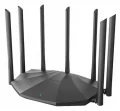
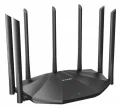


Tenda AC23 comparisons
We've noticed that many of our visitors like to compare the Tenda AC23 router with these popular models.
If there’s information about the Tenda AC23 that you would like to see on this site, then write to us.
Updated: June 20, 2024


